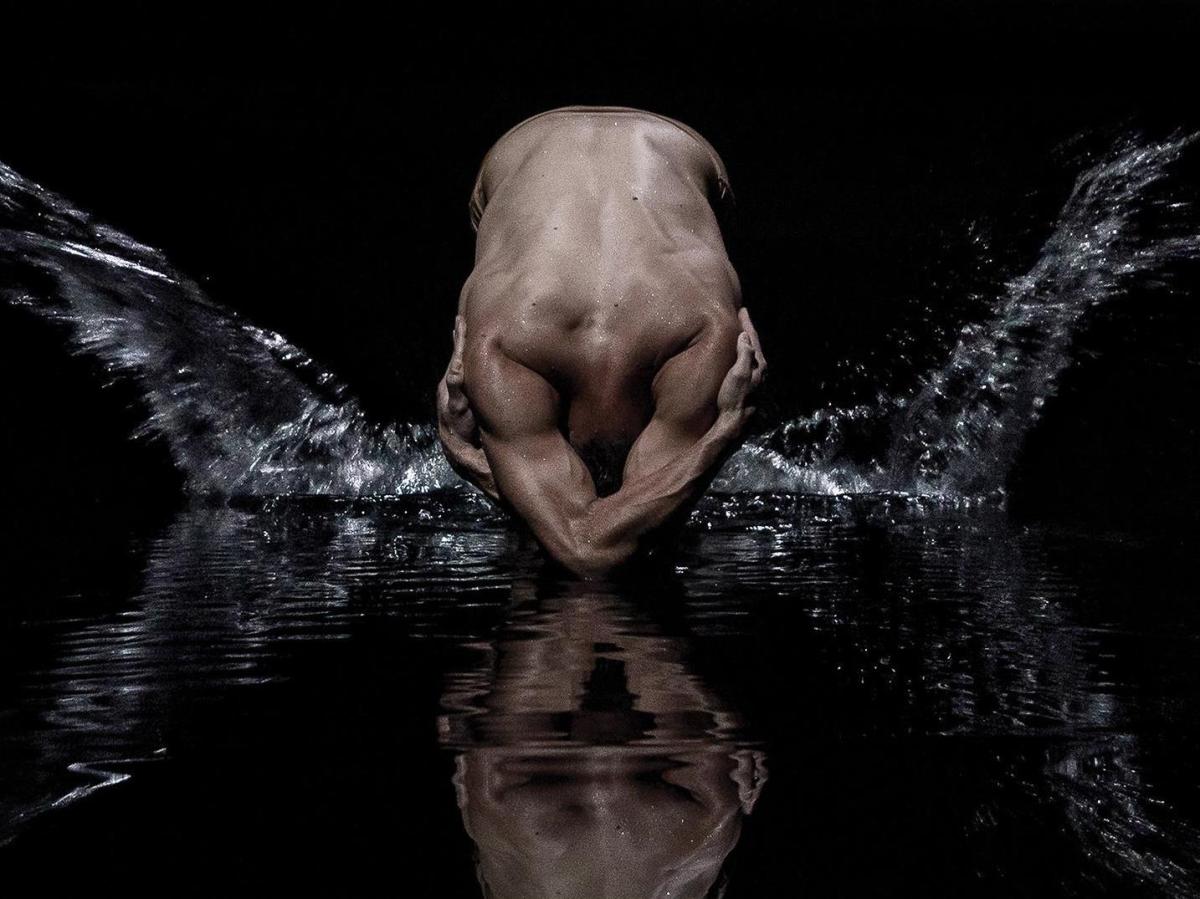In 2013, at the Aichi Triennale, dancer and choreographer Damien Jalet wandered into an installation called Foam. The work was by sculptor and Art Professor Kohei Nawa, and Jalet immediately knew that he wanted to meet and collaborate with the Japanese artist. The result is Vessel, a compelling and deeply strange melding of two art forms. As dance, it is temporary and based in movement; as sculpture its vocabulary is entirely visual and exists parallel to its subject matter rather than possessing a narrative of its own.
One of the first decisions made was to obscure the dancers’ heads. Bent into impossible shapes with heads constantly behind body parts – their own or those of the others – the dancers are deprived of their humanity. It’s amazing how much the face and head define a person; by removing such a distraction, the subtleties and complexities of the rest of the body are illuminated. There is no individual, no male or female, no ethnicity or clues of personality. Yukiko Yoshimoto’s stark, almost black and white lighting design sketches every rippling muscle, every undulating torso and sliding shoulder blade in visceral detail as the creatures onstage writhe, tangle and fight gravity.
Humans, however, have a natural tendency towards pareidolia – the habit of finding faces in everything. And so, as the dancers fold into a forward bend, the spaces between their shoulders and necks become eyes, their crossed wrists a nose, the space below the crooks of elbows a gaping maw. Sometimes they are creatures without recognisable identity or individuality, like bacteria or aliens. At other moments they resemble plucked chickens, kaleidoscopic vaginas, heavy heads on legs.
The result is a bizarre and mesmerising exploration of the ways seven living human bodies can be sculpted onstage. They begin in three intertwined masses of limb and torso on a thin layer of water, their shapes reflected in vertical symmetry. They are coaxed apart by Marihiko Hara’s halting score, then brought back together, synchronised and pulled apart again. Over 60 minutes, there are moments that are creepy, strange or erotic, and others that are surprisingly comical. Some images are dragged out and create a lull, some struggle to find relevance in the whole, but as a purely visual exploration, Vessel is an amazing piece of art to lose yourself in.
Over the course of the show, the dancers are drawn towards Nawa’s vessel in the centre of the stage, a bubbling cauldron filled with a silk white material created by the sculptor, which is solid when moved but melts when held still. This, according to Nawa, is “the basin that marks the boundary between our world and the other world”.
Vessel may not possess a discernable narrative, but it definitely elicits reaction – something primal and automatic. To fully enjoy the work, audience members should not expect a story, order or explanation. They should not even expect the work to make sense. Vessel works best if the viewer gives over to the poetry of image imbued with movement, and enjoys the art for its own sake.
4 out of 5 stars
Perth Festival presents:
Vessel
Choreography: Damien Jalet
Set Design: Kohei Nawa
Sound/Music:Marihiko Hara with special guest Ryuichi Sakamoto
Lighting Designer: Yukiko Yoshimoto
Dancers: Mirai Moriyama, Jun Morii, Nobuyoshi Asai, Naoko Tozawa, Mayumu Minakawa and Aimilios Arapoglou
Technical Director: So Ozaki
Heath Ledger Theatre, State Theatre Centre of WA
1-4 March 2018





